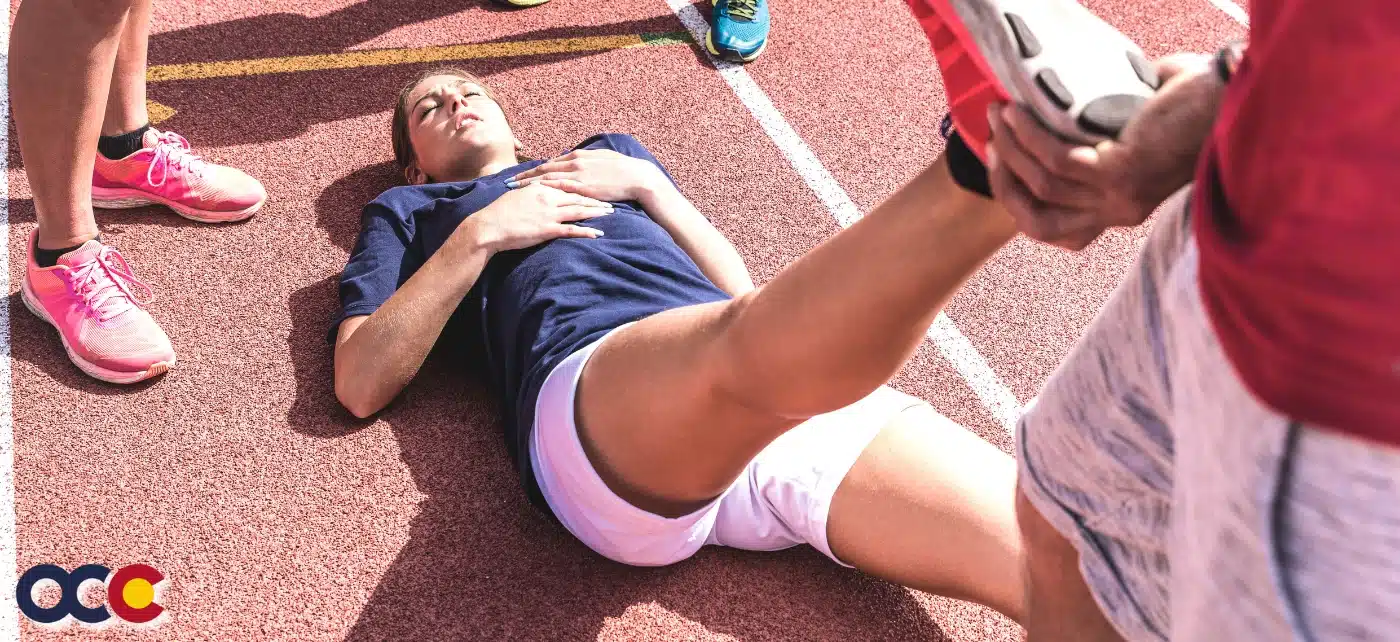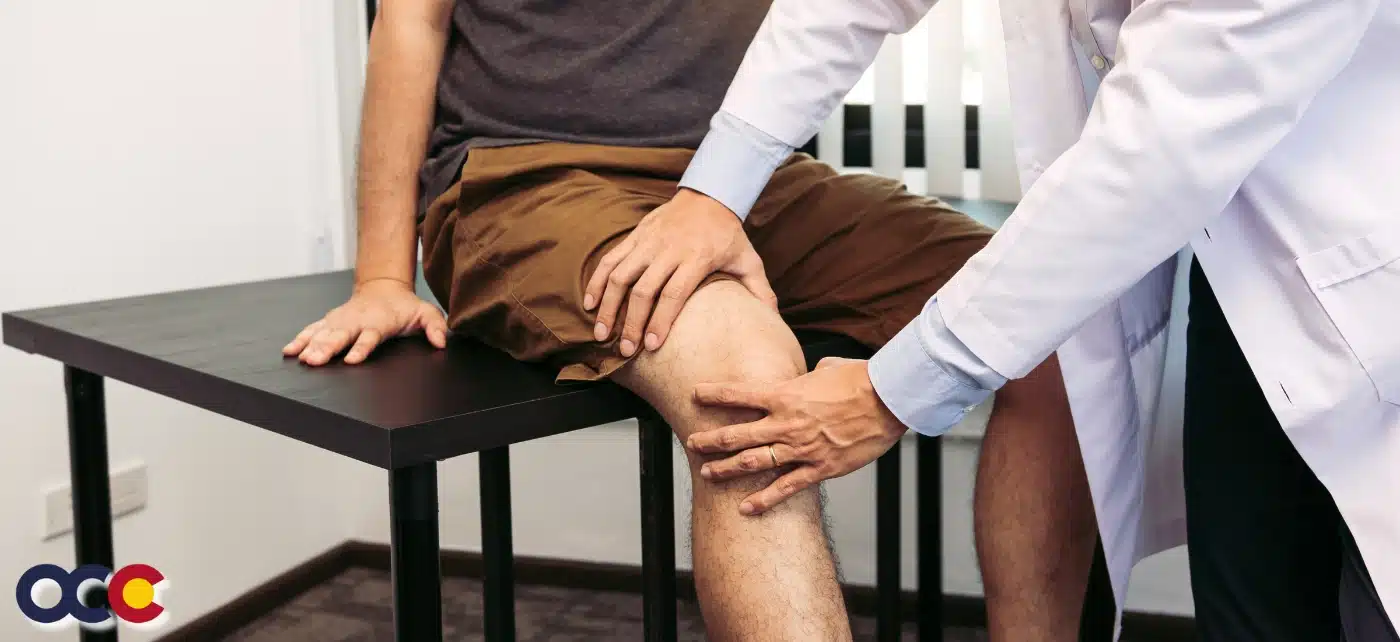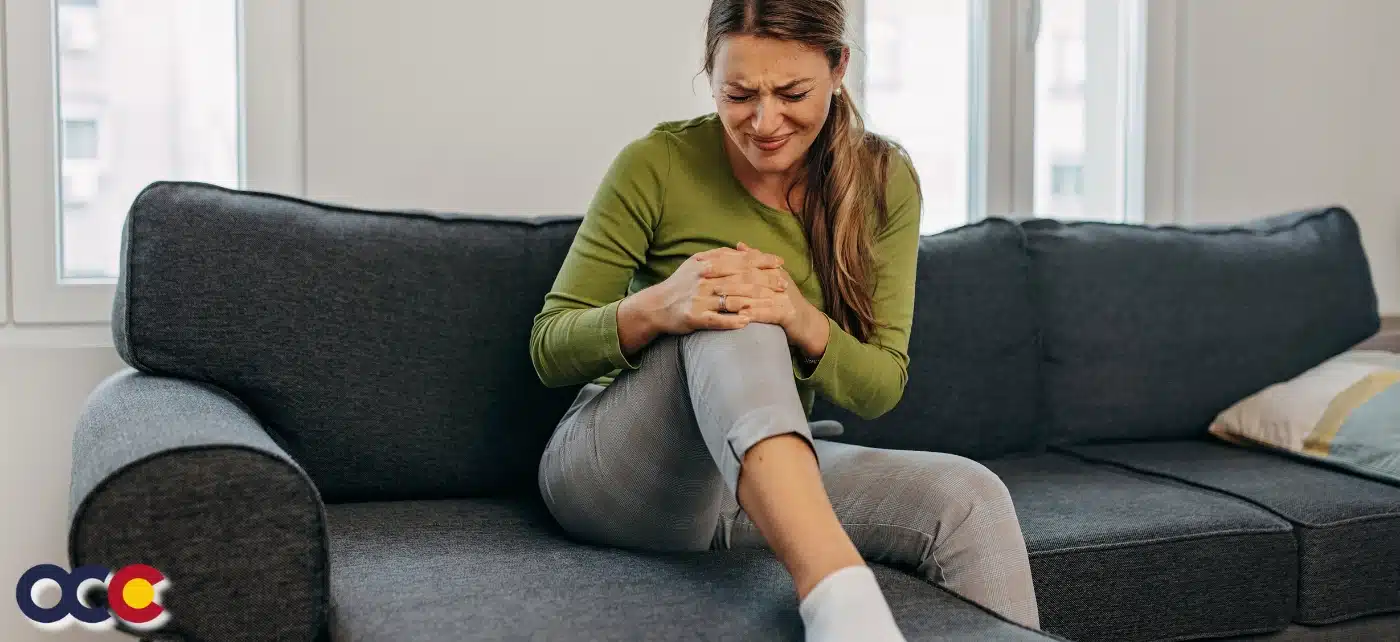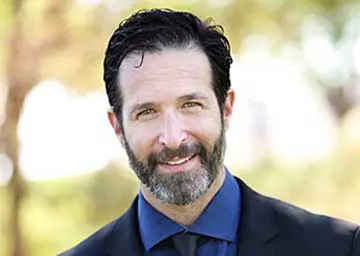“You’ll know when the time is right.” That’s what some doctors tell patients with persistent knee pain, when they ask whether they should have total knee replacement (TKR) surgery.
Of course, it’s not always that easy to tell. Yes, you may have arthritis and may suffer from joint pain when you bend your knee, but you may not think it’s serious enough to consider surgery.
There may be advantages to waiting – total knee replacement is a major surgery with possible complications, you’ll need time off from work and physical therapy to recover, and there are less involved measures that may offer some relief. But there may also be advantages to acting sooner — you may enjoy better results if the joint hasn’t deteriorated too much, you may not be a good candidate for surgery if you wait until you’re older and in poorer health, and you may want to get back as soon as possible to an active lifestyle.
Women, especially, tend to delay the decision to undergo total knee replacement reportedly because they have a higher tolerance for pain and inconvenience than men. In a study that compared men and women who were about to undergo knee surgery, females’ knees were in far worse shape than the mens’, even after controlling for other factors.
“Women are far more likely to suffer from knee pain due to osteoarthritis than men,” says Dr. Harold Hunt, Advanced Orthopedic surgeon and total knee replacement specialist. “And while studies like this show that they’re also more likely to tolerate pain and periods of low mobility before finally deciding on surgery, we don’t like to see anyone prolonging their discomfort for an extended period of time.”
Dr. Hunt and his total joint colleagues recommend you consider these five signals that you may be ready for a total knee replacement.
1. The pain is impairing your ability to function. If your osteoarthritis is advanced enough, it will have worn away some or all of the cartilage that protects your bones from rubbing against each other at the knee. You’ll be able to see that bone-on-bone contact in x-rays. You may even see the problem with the naked eye, as severe deterioration can sometimes deform your leg and make it bow.As a result of the friction and pressure from loss of the cartilage cushion, it may hurt to perform everyday actions like walking, sitting, and climbing stairs. If your knee pain results in lost sleep, missed work, or stiffness and pain in your other leg from overcompensating, it may be time to consider TKR.
2. You’ve exhausted other options. While TKR is an increasingly common procedure, it’s still a major surgery. And even if the operation goes smoothly, you will still have a visible scar (though this will diminish with time), and you’ll need several weeks of physical therapy to recover most of the function in your knee.
There are other, less invasive ways for osteoarthritis patients to combat knee pain, although they may offer only temporary relief. Some patients treat their symptoms effectively with over-the-counter pain relievers such as aspirin, acetaminophen, ibuprofen, and naproxen. Physical therapy can help, and so can weight loss which reduces pressure on the knee. An injection of cortisone (to reduce inflammation) or synthetic fluid (to replace natural lubricant lost to osteoarthritis) can relieve knee pain for up to six months. You may also get the support you need from a knee brace. There are also less invasive surgeries – arthroscopic surgery to remove torn cartilage fragments, partial joint replacement surgeries, or partial bone reconstruction procedures like MAKOplasty – for patients with less advanced forms of arthritis.
Your doctor may suggest you try some or all of these therapies before you move on to a total knee replacement. But if you have tried them and they’ve stopped being effective, it may be time to go ahead with a total knee replacement.
3. You are the right patient for the surgery. The best outcomes after total knee replacement surgery occur in patients whose knees look the most arthritic on x-ray. A patient with bone-on-bone arthritis on x-ray should expect dramatic improvement in pain and function. To the same effect, a patient without much joint space loss on x-ray may want to consider more aggressive nonsurgical treatment options prior to knee replacement surgery. Age is also an important variable to consider. Most knee replacement surgeries occur in patients aged between 50 and 80, but there are individual situations where having the procedure at a younger or older age is appropriate. However, it is not always “the sooner, the better” when discussing timing of knee replacement surgery. Why? “A knee implant – which may be made of titanium, plastic, ceramic, or a combination of these – can last up to 20 years, so if you get one when you’re younger, you may need a revision later in life,”says Presley Swann, a revision specialist.
4. You’re physically prepared. The surgery is most effective and least risky for patients who are in decent physical This relates to patients who are not only non-diabetic or not prone to heart disease, but also those who keep fit through proper diet and exercise. Fortunately, you can prepare in the months leading up to surgery by improving your diet, losing weight, and especially building up your quadriceps. “Having stronger thigh muscles makes the recovery process easier because your quadriceps play such an important role in stabilizing the knee area,” says Dr. Jared Michalson, a fellowship-training total joint specialists at Advanced Orthopedic. So work those quads!
Being prepared also means having the proper equipment for your rehabilitation. As you recuperate, you may need a walker on every floor of your house. You may also need an ice-pack or cold therapy machine of the sort you can attach to your leg and wear for 20 minutes at a time to reduce pain and swelling in your knee. Aside from equipment, you’ll probably need the assistance of other people for a few weeks to drive you around or to perform strenuous tasks.
5. You’re mentally prepared. Many patients find the prospect of total knee replacement daunting since they know that recuperation can be painful and challenging. Therefore, it’s important for patients considering a total knee replacement to be in the right frame of mind.
First, you have to be committed to having the best outcome. That means being ready to be compliant, to do whatever the physical therapist instructs you to do, and to exercise as directed between your therapy sessions. After all, you will probably be seeing a physical therapist twice a week for about two months to increase the strength and flexibility of your new knee.
For the most effective rehabilitation, you need to commit to do the work every day, which means you shouldn’t expect to be able to go back to your job or your favorite sports for up to several weeks or longer. Even after the initial therapy, you may need up to a year of milder exercise before your implant feels normal.
Second, you should have realistic expectations. Your knee will probably never have the full functionality – the complete range of motion or freedom from pain – that you enjoyed before it became arthritic. For example, many total knee replacement patients report feeling pain when they kneel on hard surfaces.
Other than that, however, patients tend to feel vast improvements almost immediately. “Depending on the specifics of your surgery, you may be in the hospital for a couple days but your doctor and therapist will likely have you walking and climbing stairs before you go home,” says Dr. Scott Resig. And once you’re rehabilitated, you’ll typically be able to walk as much as you like and to engage in low-impact sports, such as hiking, biking, golfing, swimming, or ballroom dancing.
That’s another reason why it’s important for patients to be fit before undergoing total knee replacement surgery. If you didn’t get around much before knee pain, a new knee won’t have you running marathons. But you should be able to enjoy an active lifestyle again. Indeed, many patients, after waiting some time before deciding to have the surgery, wonder why they didn’t have it done sooner.
Do you think you may be ready for total knee replacement? Schedule an appointment with one of our knee specialists to discuss the best treatment options for your arthritis pain.
[av_heading heading=’Best Knee Replacement Surgeons’ tag=’h3′ link_apply=” link=’manually,http://’ link_target=” style=” size=” subheading_active=” subheading_size=’15’ margin=” margin_sync=’true’ padding=’10’ color=” custom_font=” av-medium-font-size-title=” av-small-font-size-title=” av-mini-font-size-title=” av-medium-font-size=” av-small-font-size=” av-mini-font-size=” av_uid=’av-jxw5qpr2′ custom_class=” admin_preview_bg=”][/av_heading]
[av_one_third first min_height=” vertical_alignment=” space=” custom_margin=” margin=’0px’ padding=’0px’ border=” border_color=” radius=’0px’ background_color=” src=” background_position=’top left’ background_repeat=’no-repeat’ animation=” mobile_breaking=” mobile_display=” av_uid=’av-n2crx1′]
[av_image src=’https://advancedortho.org/wp-content/uploads/2016/02/hunt_feature.png’ attachment=’4639′ attachment_size=’full’ align=’center’ styling=” hover=” link=” target=” caption=” font_size=” appearance=” overlay_opacity=’0.4′ overlay_color=’#000000′ overlay_text_color=’#ffffff’ copyright=” animation=’no-animation’ av_uid=’av-jhhxj9bj’ custom_class=” admin_preview_bg=”][/av_image]
[av_textblock size=” font_color=” color=” av-medium-font-size=” av-small-font-size=” av-mini-font-size=” av_uid=’av-jhhxeat7′ custom_class=” admin_preview_bg=”]
Dr. Harold Hunt
[/av_textblock]
[av_button label=’Meet Dr. Hunt’ link=’post,594′ link_target=” size=’small’ position=’center’ label_display=” icon_select=’yes’ icon=’ue80a’ font=’entypo-fontello’ color=’theme-color’ custom_bg=’#444444′ custom_font=’#ffffff’ av_uid=’av-jhhxjpm3′ custom_class=” admin_preview_bg=”]
[/av_one_third]
[av_one_third min_height=” vertical_alignment=” space=” custom_margin=” margin=’0px’ padding=’0px’ border=” border_color=” radius=’0px’ background_color=” src=” background_position=’top left’ background_repeat=’no-repeat’ animation=” mobile_breaking=” mobile_display=” av_uid=’av-i2i5hx’]
[av_image src=’https://advancedortho.org/wp-content/uploads/2017/10/michalson_feature.png’ attachment=’5792′ attachment_size=’full’ align=’center’ styling=” hover=” link=” target=” caption=” font_size=” appearance=” overlay_opacity=’0.4′ overlay_color=’#000000′ overlay_text_color=’#ffffff’ copyright=” animation=’no-animation’ av_uid=’av-jhhxlkdv’ custom_class=” admin_preview_bg=”][/av_image]
[av_textblock size=” font_color=” color=” av-medium-font-size=” av-small-font-size=” av-mini-font-size=” av_uid=’av-jhhxeat7′ custom_class=” admin_preview_bg=”]
Dr. Jared Michalson
[/av_textblock]
[av_button label=’Meet Dr. Michalson’ link=’post,5790′ link_target=” size=’small’ position=’center’ label_display=” icon_select=’yes’ icon=’ue80a’ font=’entypo-fontello’ color=’theme-color’ custom_bg=’#444444′ custom_font=’#ffffff’ av_uid=’av-jhhxm4z4′ custom_class=” admin_preview_bg=”]
[/av_one_third]
[av_one_third min_height=” vertical_alignment=” space=” custom_margin=” margin=’0px’ padding=’0px’ border=” border_color=” radius=’0px’ background_color=” src=” background_position=’top left’ background_repeat=’no-repeat’ animation=” mobile_breaking=” mobile_display=” av_uid=’av-dnizjp’]
[av_image src=’https://advancedortho.org/wp-content/uploads/2013/01/motz_feature1.png’ attachment=’795′ attachment_size=’full’ align=’center’ styling=” hover=” link=” target=” caption=” font_size=” appearance=” overlay_opacity=’0.4′ overlay_color=’#000000′ overlay_text_color=’#ffffff’ copyright=” animation=’no-animation’ av_uid=’av-jhhxncdx’ custom_class=” admin_preview_bg=”][/av_image]
[av_textblock size=” font_color=” color=” av-medium-font-size=” av-small-font-size=” av-mini-font-size=” av_uid=’av-jhhxeat7′ custom_class=” admin_preview_bg=”]
Dr. H. Andrew Motz
[/av_textblock]
[av_button label=’Meet Dr. Motz’ link=’post,601′ link_target=” size=’small’ position=’center’ label_display=” icon_select=’yes’ icon=’ue80a’ font=’entypo-fontello’ color=’theme-color’ custom_bg=’#444444′ custom_font=’#ffffff’ av_uid=’av-jhhxntha’ custom_class=” admin_preview_bg=”]
[/av_one_third]
[av_one_third first min_height=” vertical_alignment=” space=” custom_margin=” margin=’0px’ padding=’0px’ border=” border_color=” radius=’0px’ background_color=” src=” background_position=’top left’ background_repeat=’no-repeat’ animation=” mobile_breaking=” mobile_display=” av_uid=’av-8yi0wl’]
[av_image src=’https://advancedortho.org/wp-content/uploads/2013/01/papillion_feature1.png’ attachment=’797′ attachment_size=’full’ align=’center’ styling=” hover=” link=” target=” caption=” font_size=” appearance=” overlay_opacity=’0.4′ overlay_color=’#000000′ overlay_text_color=’#ffffff’ copyright=” animation=’no-animation’ av_uid=’av-jhhxslv7′ custom_class=” admin_preview_bg=”][/av_image]
[av_textblock size=” font_color=” color=” av-medium-font-size=” av-small-font-size=” av-mini-font-size=” av_uid=’av-jhhxeat7′ custom_class=” admin_preview_bg=”]
Dr. John Papilion
[/av_textblock]
[av_button label=’Meet Dr. Papilion’ link=’post,605′ link_target=” size=’small’ position=’center’ label_display=” icon_select=’yes’ icon=’ue80a’ font=’entypo-fontello’ color=’theme-color’ custom_bg=’#444444′ custom_font=’#ffffff’ av_uid=’av-jhhxt1oa’ custom_class=” admin_preview_bg=”]
[/av_one_third]
[av_one_third min_height=” vertical_alignment=” space=” custom_margin=” margin=’0px’ padding=’0px’ border=” border_color=” radius=’0px’ background_color=” src=” background_position=’top left’ background_repeat=’no-repeat’ animation=” mobile_breaking=” mobile_display=” av_uid=’av-7nuxdh’]
[av_image src=’https://advancedortho.org/wp-content/uploads/2017/10/resig_feature.png’ attachment=’5787′ attachment_size=’full’ align=’center’ styling=” hover=” link=” target=” caption=” font_size=” appearance=” overlay_opacity=’0.4′ overlay_color=’#000000′ overlay_text_color=’#ffffff’ copyright=” animation=’no-animation’ av_uid=’av-jhhxt928′ custom_class=” admin_preview_bg=”][/av_image]
[av_textblock size=” font_color=” color=” av-medium-font-size=” av-small-font-size=” av-mini-font-size=” av_uid=’av-jhhxeat7′ custom_class=” admin_preview_bg=”]
Dr. Scott Resig
[/av_textblock]
[av_button label=’Meet Dr. Resig’ link=’post,5785′ link_target=” size=’small’ position=’center’ label_display=” icon_select=’yes’ icon=’ue80a’ font=’entypo-fontello’ color=’theme-color’ custom_bg=’#444444′ custom_font=’#ffffff’ av_uid=’av-jhhxtolm’ custom_class=” admin_preview_bg=”]
[/av_one_third]
[av_one_third min_height=” vertical_alignment=” space=” custom_margin=” margin=’0px’ padding=’0px’ border=” border_color=” radius=’0px’ background_color=” src=” background_position=’top left’ background_repeat=’no-repeat’ animation=” mobile_breaking=” mobile_display=” av_uid=’av-3lud9h’]
[av_image src=’https://advancedortho.org/wp-content/uploads/2017/06/swann_feature.png’ attachment=’5262′ attachment_size=’full’ align=’center’ styling=” hover=” link=” target=” caption=” font_size=” appearance=” overlay_opacity=’0.4′ overlay_color=’#000000′ overlay_text_color=’#ffffff’ copyright=” animation=’no-animation’ av_uid=’av-jhhxu0a8′ custom_class=” admin_preview_bg=”][/av_image]
[av_textblock size=” font_color=” color=” av-medium-font-size=” av-small-font-size=” av-mini-font-size=” av_uid=’av-jhhxeat7′ custom_class=” admin_preview_bg=”]
Dr. R. Presley Swann
[/av_textblock]
[av_button label=’Meet Dr. Swann’ link=’post,5271′ link_target=” size=’small’ position=’center’ label_display=” icon_select=’yes’ icon=’ue80a’ font=’entypo-fontello’ color=’theme-color’ custom_bg=’#444444′ custom_font=’#ffffff’ av_uid=’av-jhhxuh12′ custom_class=” admin_preview_bg=”]
[/av_one_third]

















